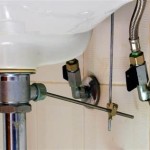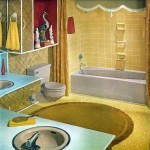What Can I Use to Unclog a Bathroom Sink?
A clogged bathroom sink can be a frustrating and inconvenient problem. The slow draining water, the unpleasant stench, and the inability to use the sink for its intended purpose can all contribute to a stressful situation. Fortunately, unclogging a bathroom sink is often a straightforward task that can be accomplished with a few simple tools and techniques. This article will explore several common methods for unclogging a bathroom sink, providing guidance on the best tools and techniques to use for different types of clogs.
1. Plunger
The plunger is a classic tool for unclogging drains, and it is often the first line of defense for a clogged bathroom sink. A plunger works by creating suction to dislodge the blockage in the drain. To use a plunger effectively, ensure the sink is partially filled with water. Place the plunger over the drain opening, ensuring a tight seal around the drain. Then, firmly push and pull up on the plunger handle in a rapid, rhythmic motion. The pressure created by this action should help dislodge the clog and allow the water to drain freely.
There are two main types of plungers that can be used for a bathroom sink: a cup plunger and a flange plunger. A cup plunger has a flat, cup-shaped head that is best suited for sinks with a standard drain opening. A flange plunger has a cup-shaped head with a rubber flap that can be used on drains with a slightly larger opening or a pop-up stopper.
2. Drain Snake
A drain snake is a long, flexible cable with a hook or auger at the end. This tool is designed to reach into the drainpipe and physically break up or remove the clog. It is particularly effective for removing clogs caused by hair, debris, or other solid objects. To use a cable snake, first insert the cable into the drain opening. Then, gently rotate the handle while pushing the cable further into the drainpipe. Once you encounter resistance, try to break up the clog by rotating the handle back and forth. Once you believe you have reached the blockage, slowly pull the cable back out of the drain.
Drain snakes come in various lengths and diameters, so choose one that is appropriate for the size of your sink drain. For most bathroom sinks, a 25-foot snake with a 1/4-inch diameter will suffice. Be sure to wear gloves when working with a drain snake, as it can be sharp and dirty.
3. Baking Soda and Vinegar
Baking soda and vinegar offer a natural, environmentally friendly solution for unclogging a bathroom sink. The combination of these two ingredients creates a fizzing reaction that can help break down clogs. To use this method, first pour one cup of baking soda down the drain. Then, pour one cup of white vinegar into the drain. The mixture will immediately start to fizz and bubble. Allow the solution to sit for at least 30 minutes to allow the reaction to take place and loosen the clog. Finally, flush the drain with hot water to remove the remaining baking soda, vinegar, and dislodged debris.
Although this method is often effective, it may not work for all types of clogs, particularly those caused by large or stubborn objects. It is also essential to note that some plumbing experts recommend avoiding this method for sinks with older pipes, as the fizzing reaction can potentially damage the pipes.
4. Chemical Drain Cleaner
Chemical drain cleaners are commercially available products designed to dissolve clogs in drains. These cleaners typically contain strong chemicals, such as sodium hydroxide (lye) or sulfuric acid, which can effectively break down hair, grease, and soap scum. However, these products are also extremely corrosive and can damage drainpipes, especially older pipes. They can also release harmful fumes, so it is essential to use them with proper ventilation and caution.
Always read and follow the manufacturer's instructions carefully when using chemical drain cleaners. It is also generally recommended to avoid using chemical drain cleaners frequently, as they can damage your pipes over time. If you have older pipes or are concerned about damaging your plumbing, it is best to use a more natural method or consult a professional plumber.
5. Professional Plumber
If you have tried the methods above and your bathroom sink remains clogged, it may be time to call a professional plumber. A plumber can diagnose the problem, identify the exact location of the clog, and use specialized tools and techniques to remove it effectively. In addition, a plumber can inspect your plumbing system to identify any underlying issues that may be contributing to the problem. While calling a plumber may be more costly, it can often save you time and money in the long run, especially if you have a complex or stubborn clog.

5 Natural Ways To Unclog A Bathroom Sink Hiller How

How To Unclog A Bathroom Sink Hana S Happy Home
How To Unclog A Sink 4 Easy Ways

How To Unclog A Slow Running Bathroom Sink Drain 10 Options

Expert Plumbing Tip How To Unclog A Bathroom Sink Garden City Useful Information

How To Unclog A Bathroom Sink Hana S Happy Home

How To Unclog A Bathroom Sink With Snake

How To Unclog A Bathroom Sink Quickly

How To Unclog A Bathroom Sink Drain

How To Unclog A Bathroom Sink The Home Depot
Related Posts







